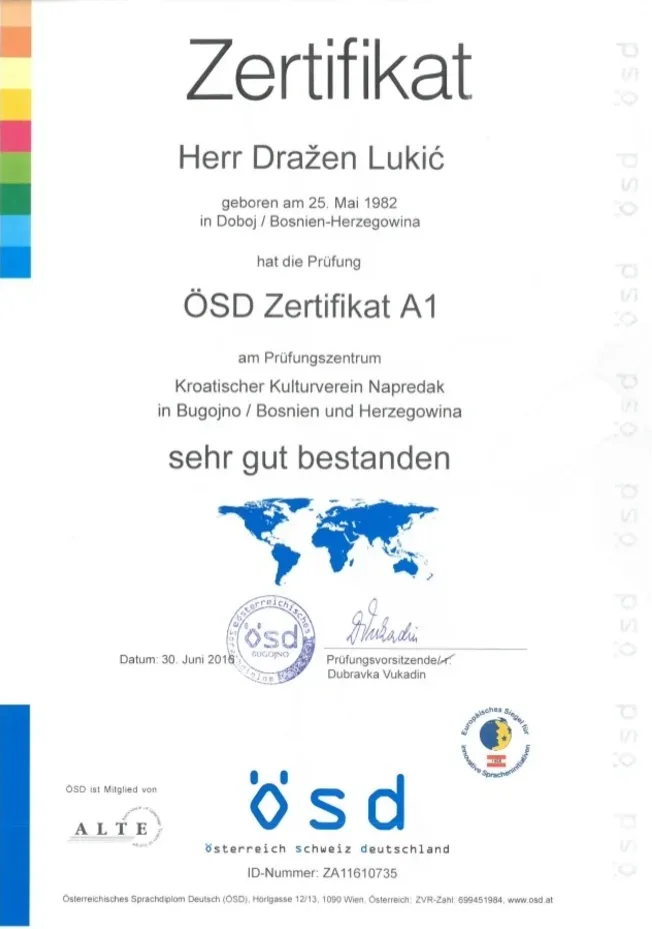Comprehending the ÖSD Exam: A Gateway to Proficiency in German
The ÖSD (Österreichisches Sprachdiplom Deutsch) exam is a standardized language efficiency test developed to assess and certify German language abilities. Acknowledged internationally, the ÖSD exam deals with numerous students, varying from novices to innovative speakers. This article aims to provide a useful overview of the ÖSD exam, detailing its structure, levels, preparation strategies, and regularly asked questions.
The Importance of the ÖSD Exam
In a globalized world where proficiency in several languages is extremely valued, the ÖSD exam serves a number of essential purposes:
Certification of Language Proficiency: The ÖSD exam uses certificates that are recognized in Austria and other German-speaking nations, helping with job opportunity and university admissions.
Standardized Assessment: The exam supplies a standardized assessment of language skills, which can be beneficial for academic and professional purposes.
Structured Learning Path: The ÖSD uses a clear framework for language students, guiding them towards achieving particular language goals through a structured curriculum.
Structure of the ÖSD Exam
The ÖSD exam is divided into various levels lined up with the Common European Framework of Reference for Languages (CEFR). Each level tests four crucial language skills: listening, reading, writing, and speaking.
Levels of the ÖSD Exam
The ÖSD provides assessments at 6 levels, representing the CEFR framework:
A1: Beginner
A2: Elementary
B1: Intermediate
B2: Upper Intermediate
C1: Advanced
C2: Proficiency
Each level has particular requirements and expectations, allowing prospects to concentrate on suitable products and practices based upon their efficiency.
Exam Components
The ÖSD exam is divided into four distinct elements:
Listening Comprehension: Candidates listen to numerous audio products (conversations, interviews, and presentations) and answer understanding questions.
Reading Comprehension: This section includes texts of varying lengths and intricacies, accompanied by concerns that examine understanding and interpretation.
Writing: Candidates are required to produce written texts (letters, essays, or reports) depending on the level, showing their capability to convey info and arguments efficiently.
Speaking: The speaking part normally involves a conversation with an examiner, requiring candidates to show fluency, pronunciation, and grammatical precision.
Preparation for the ÖSD Exam
Getting ready for the ÖSD exam needs a tactical approach, incorporating various research study techniques and resources. Here are some effective techniques:

Research study Methods
Enlist in a Language Course: Structured courses can provide assistance and a methodical method to language knowing.
Experiment Sample Tests: Using main ÖSD sample products can familiarize prospects with the exam format and concern types.
Join a Study Group: Collaborating with peers can improve discovering through shared understanding and responsibility.
Use Language Learning Apps: Mobile applications can support language acquisition, offering vocabulary practice and interactive workouts.
Resources
Books and Workbooks: Choose materials that align with the target level of the ÖSD exam.
Online Platforms: Websites devoted to language knowing typically offer complimentary resources, including grammar exercises and vocabulary lists.
Tutoring: Personal direction from knowledgeable instructors can use customized feedback and targeted practice.
Tips for Success
Set Realistic Goals: Break down the preparation process into workable milestones.
Engage with ösd b2 : Regular interaction with native German speakers can enhance conversational abilities and cultural understanding.
Immerse Yourself in the Language: Consume German-language media-- such as films, podcasts, and books-- to improve listening and checking out abilities.
Practice Regularly: Consistency is type in language knowing; allocate time each day for practice throughout all four skills.
Frequently Asked Questions (FAQs).
1. What are the main distinctions in between the ÖSD exam and other German language exams?
The ÖSD exam specifically focuses on contemporary German usage and culture, using a distinct perspective compared to other exams, such as the TestDaF or the Goethe-Zertifikat. Each assessment has various structures, levels, and emphasis on various abilities, dealing with specific requirements and target market.
2. How long does it require to prepare for the ÖSD exam?
Preparation time varies considerably based upon the prospect's existing language skills. Usually, it can take anywhere from a couple of months to over a year of dedicated research study to prepare for each level.
3. Is there an age limitation to take the ÖSD exam?
No, there is no age limitation for prospects wishing to take the ÖSD exam. Individuals of all ages, from children to adults, are motivated to take part based on their language efficiency and objectives.
4. Where can I take the ÖSD exam?
ÖSD exams are administered at numerous licensed evaluation centers worldwide. Prospects can check out the official ÖSD site to find a center near them and to examine offered dates.
5. How are ÖSD exam results scored?
Prospects receive a score for each part of the exam, which is then combined to provide a general proficiency level. Outcomes are normally available a couple of weeks post-examination.
Conclusion.
The ÖSD exam is a highly regarded language efficiency test that works as an essential tool for individuals looking for to show and accredit their German language abilities. Through efficient preparation, structured knowing, and access to the right resources, prospects can achieve their preferred proficiency level, enhancing their opportunities in both scholastic and professional domains.
